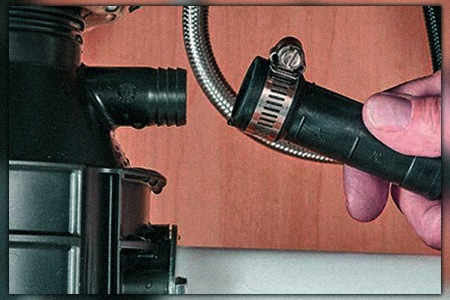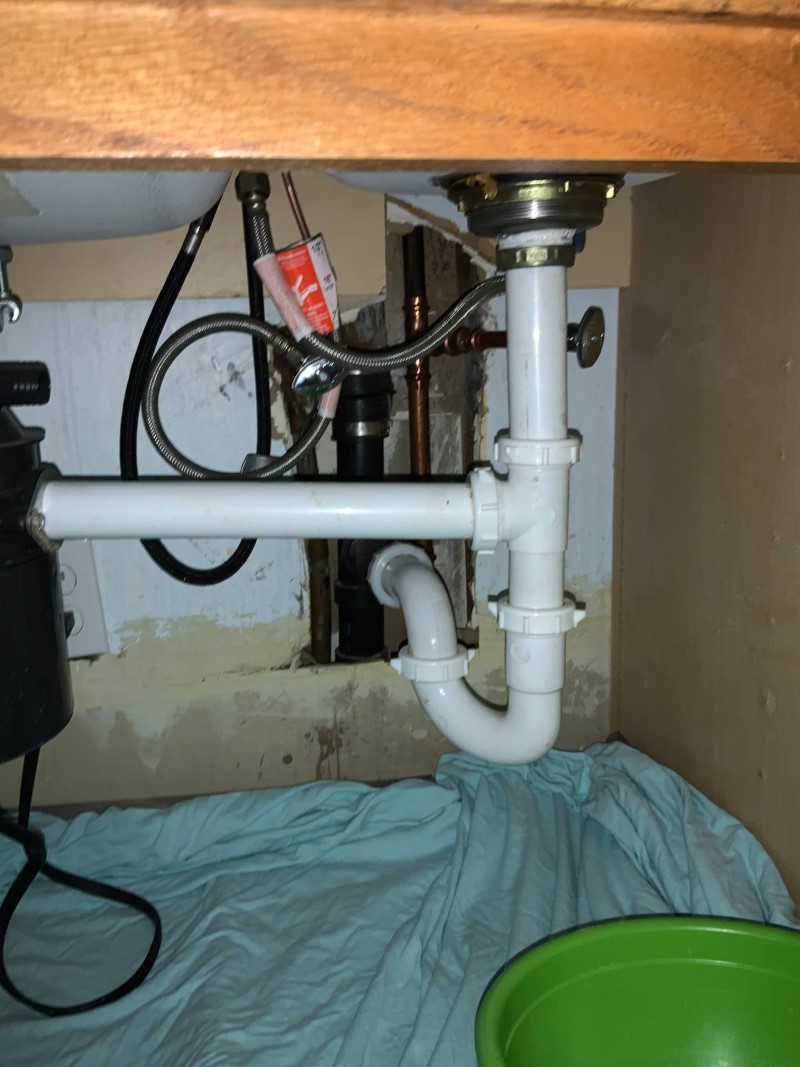Swift Solutions for Fixing a Dripping Waste Disposal Unit
Swift Solutions for Fixing a Dripping Waste Disposal Unit
Blog Article
Listed here down the page yow will discover additional good points when it comes to Garbage Disposal Leaking From Bottom.

Garbage disposals are vital cooking area home appliances that assist in dealing with food waste effectively. Nonetheless, a dripping garbage disposal can be a frustrating and untidy issue to deal with. Luckily, several leaks can be taken care of quickly with a couple of straightforward actions. In this post, we will discuss just how to take care of a leaking waste disposal unit efficiently.
Intro
Garbage disposals are set up under kitchen sinks and are created to shred food waste into smaller sized items, allowing it to pass through the plumbing system quickly. While these devices are usually trusted, leaks can happen with time as a result of wear and tear, loosened connections, or damages to the device.
Step-by-Step Guide to Fixing a Leaking Waste Disposal Unit
Turn Off the Power
Before attempting any repairs, ensure that the power to the garbage disposal system is shut off to stop the threat of electrical shock.
Locate the Leakage
Determine the precise area of the leak and establish the reason
Tighten Connections
Make use of a wrench to tighten up any type of loosened connections between the disposal device and the pipes system.
Change Seals or Gaskets
If the leakage is due to worn seals or gaskets, eliminate the old parts and change them with brand-new ones.
Patching Splits or Holes
For splits or openings in the disposal system, use epoxy or an appropriate patching product to secure the damaged area.
Recognizing the Source of the Leakage
Before trying to fix a dripping waste disposal unit, it is vital to identify the source of the leakage. This can normally be done through aesthetic evaluation or by conducting straightforward examinations.
Visual Assessment
Inspect the waste disposal unit system meticulously for any type of indicators of water leakage. Pay close attention to areas around seals, gaskets, and link factors.
Checking for Leakages
One means to evaluate for leaks is by running water with the disposal system and looking for any type of noticeable indicators of leakage.
Common Causes of Leaks in Trash Disposals
Worn Seals and Gaskets
Seals and gaskets play an essential function in stopping water from leaking out of the garbage disposal. Gradually, these components can weaken, bring about leaks around the disposal unit.
Loose Links
The connections in between the garbage disposal and the pipes system can end up being loosened over time, creating water to leak out during procedure.
Fractures or Openings in the Disposal Unit
Physical damage to the waste disposal unit, such as fractures or holes in the real estate, can additionally lead to leaks.
Tools and Products Needed for Repairing a Leaking Garbage Disposal
Prior to beginning the repair service process, collect the essential tools and products, consisting of a screwdriver, adjustable wrench, plumbing technician's putty, replacement seals or gaskets, and epoxy or patching material for repairing cracks or openings.
Evaluating the Garbage Disposal After Repair Work
When the repair work is full, examine the waste disposal unit by running water with it to make sure that the leak has actually been solved.
Preventive Maintenance Tips to Prevent Future Leaks
To stop future leaks, it is essential to carry out regular upkeep on your waste disposal unit. This includes keeping it clean, staying clear of placing non-food products or tough objects down the disposal, and regularly looking for leakages or various other issues.
Final thought
In conclusion, taking care of a dripping waste disposal unit is a reasonably uncomplicated procedure that can be finished with standard tools and materials. By following the actions outlined in this article and exercising preventative maintenance, you can maintain your waste disposal unit in good working problem and avoid pricey repair services in the future.
What to Do About a Leaking Garbage Disposal
A leaking garbage disposal often goes unnoticed until you confront a sopping cabinet, a foul-smelling puddle, or an audible drip-drip-drip from the unit. The fix can be frustrating, too, because the leak can stem from a number of components in the system. Fortunately, with a little sleuthing, you can zero in on the leak and—depending on the exact location—stop the icky oozing and repair the component that caused it. Worst case scenario, if it turns out that the garbage disposal must be replaced, installing a new one is a reasonable do-it-yourself task for those with basic plumbing skills. Read on to keep the cash you’d otherwise hand over to a pro.
Prepare to find the leak
Prior to testing the garbage disposal for leaks, unplug it at the wall outlet and turn off the power from the breaker box to prevent electrical shock. Then insert a watertight sink stopper into your sink drain and wipe the unit dry with a clean cloth. In any handy container, mix a few drops of food coloring into a few cups of water, and pour the dyed water onto the sink stopper to help you locate the leak.
Investigate the source
the top, where the disposal meets the sink drain the side, where the dishwasher hose or main drain pipe connects to the disposal or the bottom of the unit Inspect each of these locations while gliding a light-colored rag over the unit; the dyed water will readily show on the rag and reveal the location of the leak. If a leak isn’t immediately apparent, remove the sink stopper and pour a few more cups of dyed water down the sink drain, then check for leaks again. Leaks near the top of the unit are more likely to show themselves while the sink is plugged, while side and bottom leaks are more noticeable while the sink is unplugged.
The metal sink flange that sits directly inside the sink drain is typically sealed around the top with plumber’s putty (a clay-like sealant) and then secured from under the sink with bolts. If the plumber’s putty deteriorates, or the bolts loosen, the flange can no longer form a watertight seal between the sink drain and the disposal—which could cause a leak at the top of the unit.
To reseal the leaky flange, you must first detach the garbage disposal. Start by loosening the screws securing the main drain pipe to the disposal, then loosen the screws in the metal clamp securing the dishwasher hose to the disposal and detach the drain pipe and dishwasher hose from the disposal. Loosen the screws in the mounting ring that connects the disposal to the metal mounting assembly beneath the sink, then pull down the disposal and carefully set it on a clean, dry surface. Loosen the bolts in the mounting assembly with a wrench, then pull down the mounting assembly and set it near the disposal.

I was introduced to that write-up on Tips on Fixing a Leaking Garbage Disposal through someone on a different website. You should take the opportunity to distribute this content if you enjoyed reading it. Thanks for your time. Visit us again soon.
Click Here Report this page